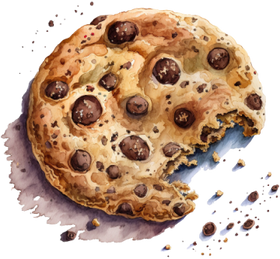Choosing the right color for your kitchen cabinets and surfaces is vital, as this space serves as the heart of the home. It's not only a place for meal preparation but also a gathering spot for family and friends. In this article, we'll focus on the shades that are easiest to maintain, comparing light vs. dark colors, and the impact of satin vs. matte finishes. We'll also look into practical textures to avoid visible dirt.
Light Colors vs. Dark Colors:
Light colors are generally easier to keep clean because stains and splatters are easier to spot and remove. White, cream, and beige cabinets are popular for their clean look and their ability to make a small kitchen appear larger. Choosing a matte finish can help minimize issues with fingerprints and grease marks. In contrast, a satin finish might show more dirt as its shininess can reflect light and highlight smudges.
Shades like white and beige have long been seen as ideal options, as they reflect light and make a room feel larger and brighter. However, light colors can get dirty quickly, especially in bustling kitchens or homes with kids. Water spots, grease, and finger marks can be especially visible, leaving surfaces looking unkempt and grimy.
On the other hand, dark colors may be harder to clean and more prone to showing fingerprints and grease. Dark cabinets, like black or deep grey, can lend a modern, sophisticated look to your kitchen. A matte finish can help reduce these issues, but a glossy finish might highlight smudges due to its reflective quality.
Yet, darker shades such as black are gaining popularity in modern kitchens for their elegance and sophistication. They also have the added benefit of concealing dirt and imperfections, making them easier to maintain. However, dark colors tend to show smudges and grease, possibly making your cabinets look messy and less hygienic.
Satin vs. Matte Finishes:
Apart from color, the finish on your walls is an important aspect of achieving the perfect kitchen decor. Satin finishes are often recommended for kitchens due to their easy cleanability and smooth surface that reflects light, providing an elegant look. Matte finishes are another popular choice, offering a soft touch that can give the kitchen a natural, organic feel. Matte finishes are also beneficial for concealing stains and imperfections, making maintenance easier.
Surface Textures of Kitchen Cabinets:
The texture of your kitchen cabinet fronts is another crucial factor to consider when picking the ideal color. Materials like wood, stainless steel, and tiles have differing textures that affect both the kitchen's aesthetic and cleaning ease. Wooden cabinets offer a natural texture for a warm, rustic feel. Stainless steel, commonly used for sinks, is a go-to in modern kitchens for its sleek texture and chic appearance. Tiles are often used for flooring and countertops, bringing texture and interest through variety in patterns and colors such as reds, pinks, and oranges, while being easy to clean and stain-resistant.
Kitchen Backsplash:
The backsplash is a critical element in kitchen design and must be considered when choosing the best color. It can be crafted from materials like glass, ceramic, and metal to add texture and style to your kitchen. Additionally, a backsplash provides extra protection against splashes and grime.
- Glass is a popular choice due to its smooth, easy-clean surface resistant to stains, available in a variety of colors and finishes to complement any decor style. However, it can be fragile and requires regular care to avoid scratches and cracks.
- Ceramic is another common backsplash option. Easy to clean and stain-resistant, ceramic is available in many patterns and colors for added style and texture. However, it can be prone to cracks and chips, requiring regular maintenance to preserve its look.
- Metal offers a sleek, modern option for kitchen backsplashes. Stainless steel and brass, resistant to stains and easy to clean, add a sophisticated touch. However, they may scratch easily, necessitating regular upkeep.
Conclusion
Before embarking on a kitchen renovation, consider your choice of colors for furniture and surfaces, as this can significantly affect the overall look and the care and durability of the materials used.
- Light colors can enhance a sense of space and brightness, while dark colors add a touch of elegance.
- Satin finishes offer a shiny, smooth look, whereas matte finishes present a natural, organic texture.
- Materials like oak, stainless steel, and tiles provide different textures that influence your kitchen's overall appearance, with the backsplash adding a pop of color and texture while protecting against splashes and grime.
By keeping these factors in mind, you'll be able to choose the ideal color and materials for your kitchen based on your personal style and maintenance and durability needs. Also, don't forget to incorporate decorative accessories such as wall art to complete the look. Art can bring a personal, unique touch to your kitchen and help fill empty wall spaces for a more comprehensive and harmonious appearance.
In conclusion, while the choice of colors and materials is crucial for your kitchen's look, adding accessories like wall art can make a significant difference in the final appearance of the room.


